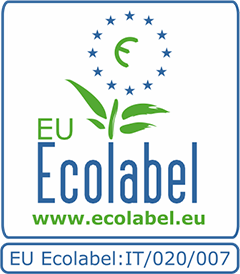“There are many roads to Green Cleaning. Our goal is to make available resources and tools for implementing Green Cleaning, to let end users talk.”
Stephen P. Ashkin
Founding Executive Director of Green Cleaning Network
Stephen P. Ashkin
Founding Executive Director of Green Cleaning Network
A good Green Cleaning program goes beyond choosing a system, equipment and chemicals, it involves policies, procedures, training, and shared responsibilities which minimize the impact of cleaning materials on the health of people living in a building and protect the environment. Current products, processes and procedures are not necessarily bad, but newer technologies, products and processes allow to clean effectively, efficiently and with less impact on health and on the environment.
The costs for developing and implementing a Green Cleaning program are not necessarily prohibitive.
In Europe there are manufacturers offering good-performing certified chemical products at competitive costs compared to traditional products.
In 2005 Arco Chimica designed, manufactured and marketed the first complete range of Ecolabel certified products for the professional cleaning industry.

Ecolabel is an European label of ecological quality for consumer goods and services, with the exception of food, beverages and medicines. The birth of the trademark dates back to the establishment of European Regulation no. 880 in 1992, recently updated by the new Regulation no. 1980/2000 of 21/09/2000. Products with the “daisy trademark” are quality products and services that respect the environment.
Each Ecolabel product has an easily recognizable logo.
The Ecolabel Regulation 1980/2000 was established by the EUEB (European Union Committee for the Ecological Label) formed by the competent national bodies and the European Advisory Forum.
EUEB revises the Ecolabel criteria, identifies new possible products, raises awareness and promotes the diffusion of the Ecolabel system.
All of these activities are carried out with the balanced participation of: industries, suppliers, SMEs, consumers’ association, and environmental associations.
The ecological criteria are defined by a Life Cycle Analysis (LCA) of the product / service itself. For each product, the main environmental aspects are taken into account:
Identifying all environmental impacts of the product during its lifecycle.
The ECOLABEL brand is awarded by the Ecolabel-Ecoaudit Committee.
The Committee is an independent body of 14 members appointed by the Ministries of the Environment, Industry, Health and Treasury.
Ecolabel products are environment-friendly and meet also the needs of end consumers by guaranteeing the product quality. Ecolabel products prove wrong the common opinion that eco-products are of a lower quality than those made with “traditional” methods. Example: to obtain the Ecolabel mark, detergents for dishwashers, washing machines and general purpose must pass a performance test. Their cleaning performance must be at least equal to the one of common, non-ecologic detergents.
To be awarded with the Ecolabel trademark, company have to undergo administrative and technical checks to verify its compliance with the Ecolabel criteria.
Only companies that comply with the Ecolabel criteria are awarded with the “daisy trademark”, which is guarantee also for consumers.
The tests during and after the examination are run by ISSPRA.
Consumers need to know that Ecolabel products are monitored, for the entire duration of the Ecolabel contract, for both the compliance with Ecolabel criteria and for advertising information.
All product’s and label’s information is controlled and based on scientific and truthful data.
All Ecolabel products must comply with these prescription with minor differences depending on products’ categories.
It is not possible to use raw materials classified as carcinogenic, mutagenic or teratogenic, or as toxic for aquatic organisms in excess of 0.01% (this limitation does not exist for normal detergents).
Reduced environmental impact. The ingredients usually used in fragrances of common detergents are often labelled as pollutants for the aquatic environment even if the low percentage used makes finished products harmless. According to the Ecolabel Directive this is not tolerated. AR-CO Chimica sent the complete list of the allowed ingredients to suppliers specialized in the production of ecological fragrances.
There are severe restrictions on the use of raw materials containing phosphorus (sodium tripolyphosphate and potassium pyrophosphate, alkaline and sequestering bases) and phosphonates (sequestrants) widely used in common detergents.
BIOCIDES: choice controlled by specific limitations
COLORANTS: The use of the same substances used in cosmetic formulations is allowed.
SURFACTANTS: Must have a anaerobic biodegradability of at least 60%
WATER: to reduce quantity of packaging material, the water content must not exceed 90% (min 11% of raw materials, 89% of water)
VOC : The quantity of Volatile Organic Compounds with boiling point lower than 150°C must not exceed 10%.
This post is also available in: Italian
Noi e i nostri fornitori archiviamo informazioni quali cookie su un dispositivo (e/o vi accediamo) e trattiamo i dati personali, quali gli identificativi unici e informazioni generali inviate da un dispositivo, per personalizzare gli annunci e i contenuti, misurare le prestazioni di annunci e contenuti, ricavare informazioni sul pubblico e anche per sviluppare e migliorare i prodotti.
Con la tua autorizzazione noi e i nostri fornitori possiamo utilizzare dati precisi di geolocalizzazione e identificazione tramite la scansione del dispositivo. Puoi fare clic per consentire a noi e ai nostri fornitori il trattamento per le finalità sopra descritte. In alternativa puoi accedere a informazioni più dettagliate e modificare le tue preferenze prima di acconsentire o di negare il consenso.
Si rende noto che alcuni trattamenti dei dati personali possono non richiedere il tuo consenso, ma hai il diritto di opporti a tale trattamento. Le tue preferenze si applicheranno solo a questo sito web. Puoi modificare le tue preferenze in qualsiasi momento ritornando su questo sito o consultando la nostra informativa sulla riservatezza.
In order to download safety data sheets and data sheets you must be logged in. If you don't have an account, you can register and get your cerdentials.